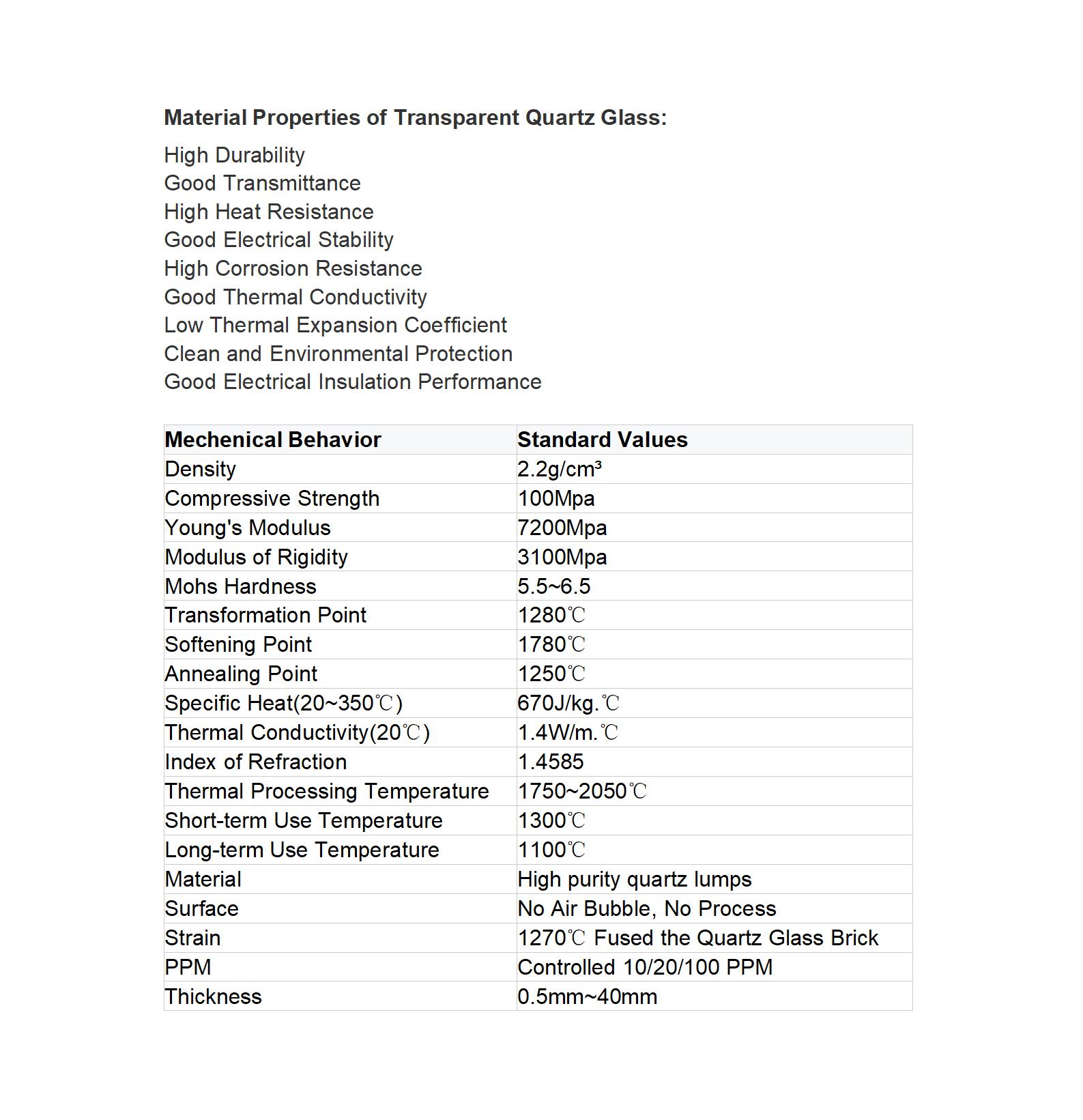T: +86-518-85528012
E: nick@luverrequartz.com
E: nick@luverrequartz.com
1st floor Runlian industrial center No. 116 QuFeng Rd., Haizhou Economic and technological development zone Lianyungang City, Jiangsu Province, China 222062
High transmittance temperature sensor quartz glass plate
High transmittance temperature sensor quartz glass plate is a special industrial technology glass with a series of excellent properties that ordinary glass cannot match.
LUVERRE quartz
99.99%
Inner with Vacuum PVC bag and then wrapped with air bubble film, outer with wooden box.
as per customer's requirement
| Availability: | |
|---|---|
High transmittance temperature sensor quartz glass plate
High transmittance temperature sensor quartz glass plate is a special industrial technology glass with a series of excellent properties that ordinary glass cannot match. It is mainly made by melting high-purity natural quartz (such as crystal, quartz sand), and its main component is silicon dioxide (SiO2). This type of glass is known for its extremely small coefficient of linear expansion (only 1/10~1/20 of ordinary glass), excellent thermal shock resistance, and the ability to remain stable under extreme temperature conditions. The commonly used temperature range is 1100 ℃~1200 ℃, and it can withstand high temperatures up to 1400 ℃ in the short term.

The structural characteristic of quartz glass is an amorphous material composed of a single component of silicon dioxide, and its microstructure is formed by tightly arranged tetrahedral units of silicon dioxide sharing oxygen atoms to form a continuous three-dimensional network. This amorphous structure endows quartz glass with many unique physical and chemical properties, such as excellent spectral transparency, extremely low thermal expansion coefficient and conductivity, as well as outstanding radiation resistance and long lifespan under extreme conditions. These characteristics together constitute the irreplaceable application value of quartz glass in many fields.

The application of quartz glass in the field of temperature sensors benefits from its excellent spectral transparency. It can transmit a continuous wavelength range from ultraviolet to infrared, so quartz glass can provide good optical performance and stability in the manufacturing of temperature sensors. In addition, the high transmittance of quartz glass enables it to accurately transmit and detect light in temperature sensor applications, thereby improving the accuracy and reliability of the sensor.
High transmittance temperature sensor quartz glass plate
High transmittance temperature sensor quartz glass plate is a special industrial technology glass with a series of excellent properties that ordinary glass cannot match. It is mainly made by melting high-purity natural quartz (such as crystal, quartz sand), and its main component is silicon dioxide (SiO2). This type of glass is known for its extremely small coefficient of linear expansion (only 1/10~1/20 of ordinary glass), excellent thermal shock resistance, and the ability to remain stable under extreme temperature conditions. The commonly used temperature range is 1100 ℃~1200 ℃, and it can withstand high temperatures up to 1400 ℃ in the short term.

The structural characteristic of quartz glass is an amorphous material composed of a single component of silicon dioxide, and its microstructure is formed by tightly arranged tetrahedral units of silicon dioxide sharing oxygen atoms to form a continuous three-dimensional network. This amorphous structure endows quartz glass with many unique physical and chemical properties, such as excellent spectral transparency, extremely low thermal expansion coefficient and conductivity, as well as outstanding radiation resistance and long lifespan under extreme conditions. These characteristics together constitute the irreplaceable application value of quartz glass in many fields.

The application of quartz glass in the field of temperature sensors benefits from its excellent spectral transparency. It can transmit a continuous wavelength range from ultraviolet to infrared, so quartz glass can provide good optical performance and stability in the manufacturing of temperature sensors. In addition, the high transmittance of quartz glass enables it to accurately transmit and detect light in temperature sensor applications, thereby improving the accuracy and reliability of the sensor.